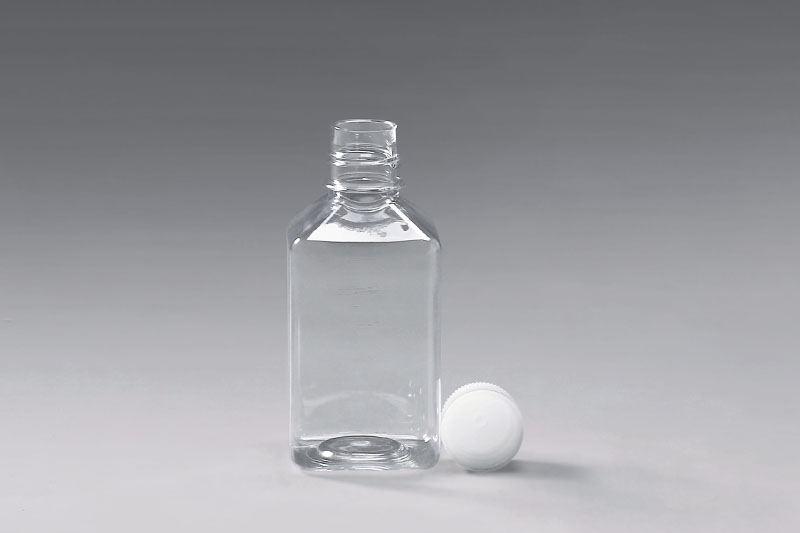Media bottles are special containers for storing serum, culture medium, trypsin, reagents and other products. These solutions are generally used for cell culture, so the packaging must meet the requirements of no endotoxin, so as not to affect the normal growth of cells. So how do you remove endotoxins from containers?
The chemical composition of endotoxin is lipopolysaccharide, which is one of the main components of the cell wall of Gram-negative bacteria. A live bacterium releases very little endotoxin, but a large amount of endotoxin can be released after death. Because endotoxin can stimulate many kinds of cells and affect the experimental results, the source of endotoxin in the culture medium should be minimized in the experiment, and the packaging container is an important aspect.
At present, the serum bottles on the market are mainly made of glass or PET/PETG, and endotoxins can be tightly adhered to the glassware. The common methods in the laboratory cannot completely eliminate endotoxins. Endotoxin can be completely removed from glassware by dry heat sterilization at 250°C for 30 minutes or 180°C for 2 hours. The high temperature resistance of PET material is slightly lower, and chemical degradation method can be used to remove endotoxin on plastic serum bottles. Commonly used 3-5% hydrogen peroxide, potassium dichromate sulfuric acid cleaning solution (potassium dichromate: sulfuric acid: water is commonly used). ratio 1:1:10 or 1:2:8), 0.1M HCl or 0.1M NaOH soaking to remove. Generally deal with more than 4h.
It should be noted that since potassium dichromate is a toxic and carcinogenic strong oxidant, protective gear should be worn when removing endotoxin from plastic media bottles to prevent direct skin contact.
The FAI climbed 5.9 percent year-on-year in the first 11 months of 2018, quickening from the 5.7-percent growth in Jan-Oct, the National Bureau of Statistics (NBS) said Friday in an online statement.
The key indicator of investment, dubbed a major growth driver, hit the bottom in August and has since started to rebound steadily.
In the face of emerging economic challenges home and abroad, China has stepped up efforts to stabilize investment, in particular rolling out measures to motivate private investors and channel funds into infrastructure.
Friday's data showed private investment, accounting for more than 60 percent of the total FAI, expanded by a brisk 8.7 percent.
NBS spokesperson Mao Shengyong said funds into weak economic links registered rapid increases as investment in environmental protection and agriculture jumped 42 percent and 12.5 percent respectively, much faster than the average.
In breakdown, investment in high-tech and equipment manufacturing remained vigorous with 16.1-percent and 11.6-percent increases respectively in the first 11 months. Infrastructure investment gained 3.7 percent, staying flat. Investment in property development rose 9.7 percent, also unchanged.
 English
English



















































